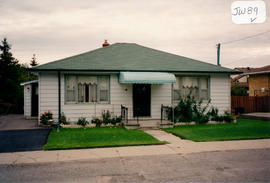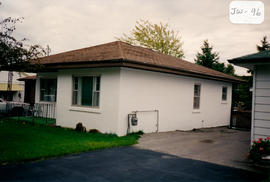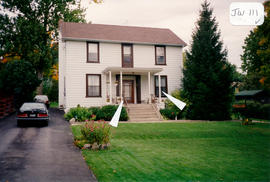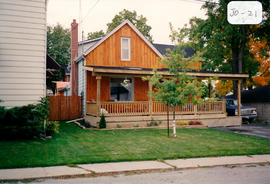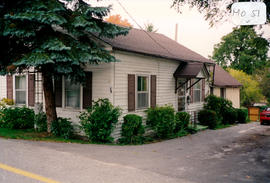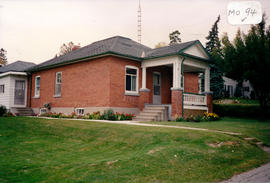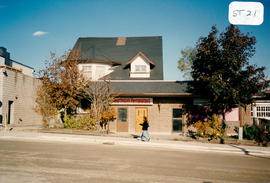- CA BWGPL GJ-HB-2017-04-05-18
- Item
- 1995
Part of George Jackson fonds
This house was once located at 89 John St. West. It was probably built pre-Confederation and it was considered to be one the best examples of the Regency Cottage style of building in Bradford. The one-storey, stucco, square building had an addition at the rear that contained a couple of rooms. There also was a long wooden shed behind the house. Mr. Robinson lived here in early 1930’s. Later it became the home of Bill Hounsome and his wife, Lena, and son Allen. Sam Caen (?) and his wife Daisy and their sons lived here after World War II. In its final years this building was the home of the Everitt family. It was demolished on April 11, 2014 (Bradford Times, April 24, 2014). (1, 2)
George Jackson

